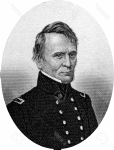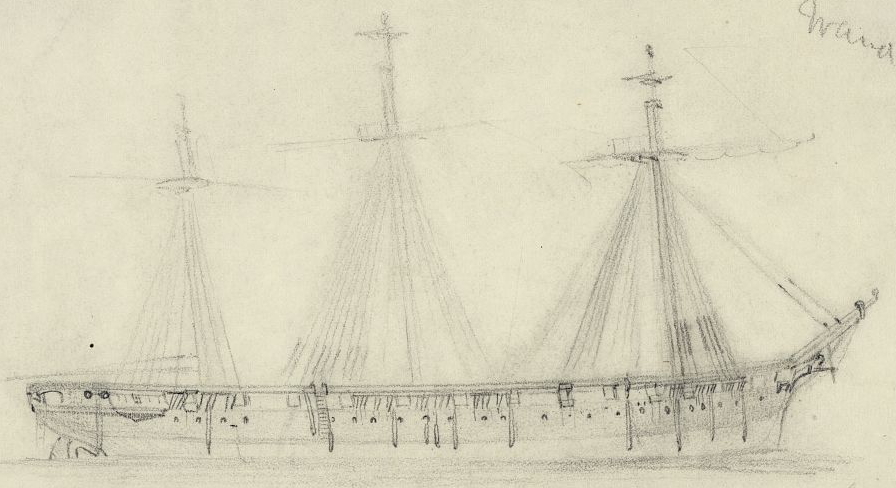 One of the largest ships in the US Navy during the Civil War was finished at the Washington Navy Yard. After having built various parts of the USS Pensacola in navy yards in states that had seceded, it was fortunate that the final work was done at the Yard: that way, the US Navy could keep it. The full story is below.
One of the largest ships in the US Navy during the Civil War was finished at the Washington Navy Yard. After having built various parts of the USS Pensacola in navy yards in states that had seceded, it was fortunate that the final work was done at the Yard: that way, the US Navy could keep it. The full story is below.
In 1857, the US Government appropriated money for six new steamships. As usual, the work was spread among several navy yards. In the case of the USS Pensacola, this was taken to an extreme, as it was actually built in three different facilities.
The main work for the Pensacola was done, fittingly enough, in Pensacola. On March 29, 1859, the Evening Star reported that she was, “rapidly approaching completion,” which turned out to be a bit of a hasty pronouncement: When she was launched on August 13, 1859, she was still in fairly rudimentary shape.
Two months later, a “set of water tanks” that had been built at the Washington Navy Yard were sent to the Norfolk Navy Yard. However, it would not be until early the following year that the ship that was to receive them would arrive. After a brief stop in Key West, she proceeded under sail to Norfolk, where where her bottom was to be coppered.
In the meantime, the Washington Navy Yard continued with its work, now building two boilers that the Intelligencer said were “worth a visit.” The curious visitor would see iron tanks 17 by 11 by 11 feet, which had been “excellently put together.” It does make you wonder how starved for excitement the usual reader of the Intelligencer (or the Evening Star, who reprinted the article) was in the summer of 1860.
Unsurprisingly, the newspapers of the time kept up a running commentary on the progress of this ship. The next installment was, it must be noted, quite interesting. They concerned the casting of the propeller, a monster of 25,000 pounds (just for comparison, the Titanic’s propellers 50 years later weighed about 3 times this amount) It was the largest casting made up until then at the Washington Navy Yard, and required “the united labors of some twelve men upwards of two days to uncover it and make ready for the hoisting out of the mould.” Another set of workers was working on an 8,000 pound chain for the ship.
It was not until the middle of December that the Pensacola finally left Norfolk, just before South Carolina declared that it had seceded from the United States. By the time the Pensacola had reached the Eastern Branch, on January 8, 1861, Virginia was well on its way to secession, as well.
Fortunately work proceeded apace with four engines being installed, to produce a total of 6,000 horsepower. Nonetheless, it was not until September 16 that the ship would be commissioned and sent to war. Under the command of Captain Henry W. Morris, she joined Admiral Farragut’s blockade in the Gulf of Mexico, and assisted ably in the battle for New Orleans.
After the war, rather than being retired, she sailed around the world, and, in fact, remained a part of the Navy until 1911, though much of her later life was spent as a training and receiving ship. In May 1912. she was burned and sunk in San Francisco Bay, a sad end to a remarkable ship.

